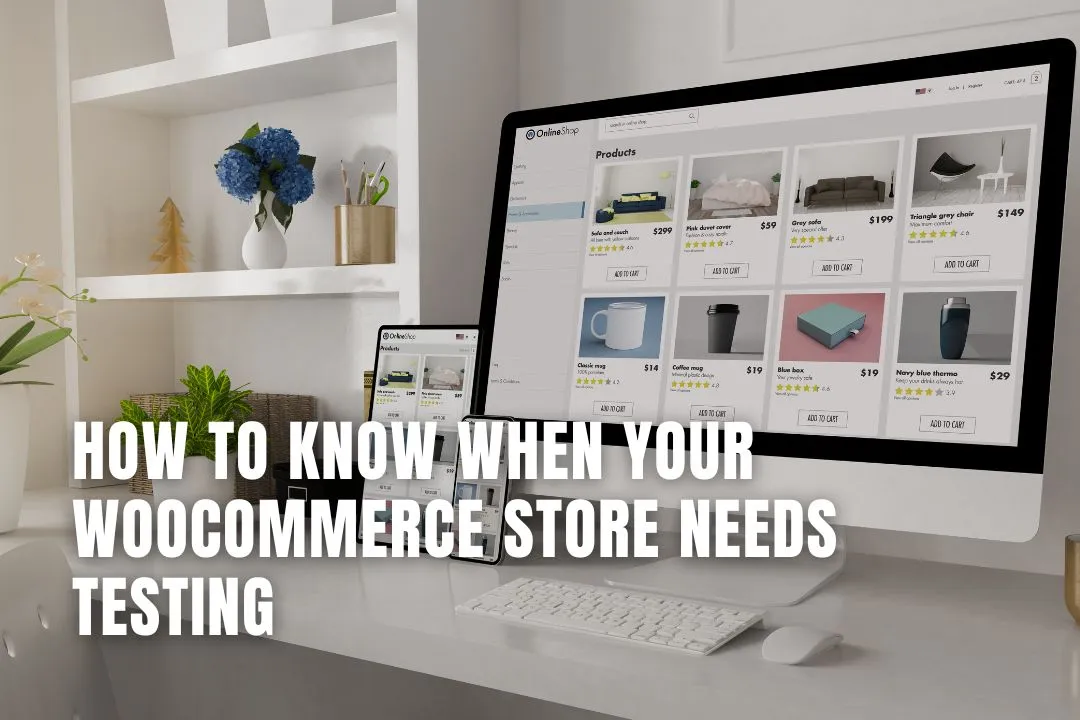
Running a WooCommerce store involves more than just adding products and processing orders. It requires consistent monitoring to ensure everything works seamlessly. Even small issues like slow page loads, broken checkout flows, or plugin conflicts can hurt user experience and lead to revenue loss. Many store owners only consider testing after problems arise, but recognizing early warning signs can save time and prevent bigger issues. This article explains what WooCommerce testing involves, key indicators that your store needs it, and how proactive testing ensures smooth performance, secure transactions, and customer satisfaction throughout your store’s growth journey.
Before identifying when your store needs testing, it’s essential to understand what WooCommerce testing involves and why it plays a crucial role in your store’s success.
WooCommerce testing is the process of evaluating your online store to ensure every feature, from product browsing to checkout, works as intended. It involves verifying that pages load correctly, transactions process smoothly, and integrations like payment gateways, shipping modules, and plugins function without errors.
Because WooCommerce relies on multiple plugins and frequent updates, even a small change can disrupt store functionality. A single broken link, cart error, or compatibility issue can lead to abandoned purchases and lost revenue. Testing helps identify these problems early, maintain site speed, and ensure security compliance. It also enhances customer experience by ensuring users can shop without encountering bugs or slowdowns. Whether you’re launching a new store, adding features, or preparing for peak sales periods, systematic testing ensures your WooCommerce site remains reliable and conversion-focused.
For a detailed understanding of WooCommerce testing, you may read this article.
Testing a WooCommerce store isn’t just about checking if pages load; it’s about ensuring every customer interaction works flawlessly. Focusing on these key areas helps maintain reliability and user trust.
The checkout process is the most critical part of any store. Test payment gateways, coupon application, tax calculations, and order confirmations to ensure no errors interrupt the buying journey.
Verify that product details, images, pricing, and variations display correctly. Test inventory updates when items are purchased to avoid overselling or showing out-of-stock items as available.
Many customers shop via mobile devices, so test your store on different screen sizes and browsers to confirm usability remains consistent and smooth. This is what cross-browser testing is mostly about.
Check for vulnerabilities like insecure forms, weak SSL implementation, or exposed customer data. Testing security ensures compliance with privacy standards and builds customer trust.
To keep your WooCommerce store running smoothly, testing should be structured and proactive rather than reactive. Following these best practices ensures issues are identified and resolved before they impact customers.
Beyond identifying bugs and errors, testing plays a vital role in shaping the overall customer experience of your WooCommerce store. Here’s how it makes an impact.
Thorough testing ensures every feature, from browsing products to completing checkout, works seamlessly. Customers encounter fewer errors, which reduces frustration and keeps them engaged longer on your site.
Performance testing helps identify bottlenecks that slow down pages or transactions. A faster store improves customer satisfaction, decreases cart abandonment, and boosts overall conversions.
Regular security testing prevents vulnerabilities that could expose sensitive customer data. A secure shopping experience builds trust, encouraging repeat purchases and positive reviews.
Cross-browser and mobile testing ensures users get the same smooth experience whether shopping on a phone, tablet, or desktop. This consistency leads to better accessibility and loyalty.
Regular testing is essential for maintaining a seamless and trustworthy WooCommerce store. By recognizing early signs of performance or functionality issues, you can address problems before they affect sales or customer trust. Testing not only prevents revenue loss but also enhances user satisfaction through smooth navigation, secure transactions, and consistent performance across devices. Make testing a part of your store’s ongoing maintenance strategy rather than a last-minute fix. A proactive approach ensures your WooCommerce store remains reliable, scalable, and ready to deliver an exceptional shopping experience as your business grows.